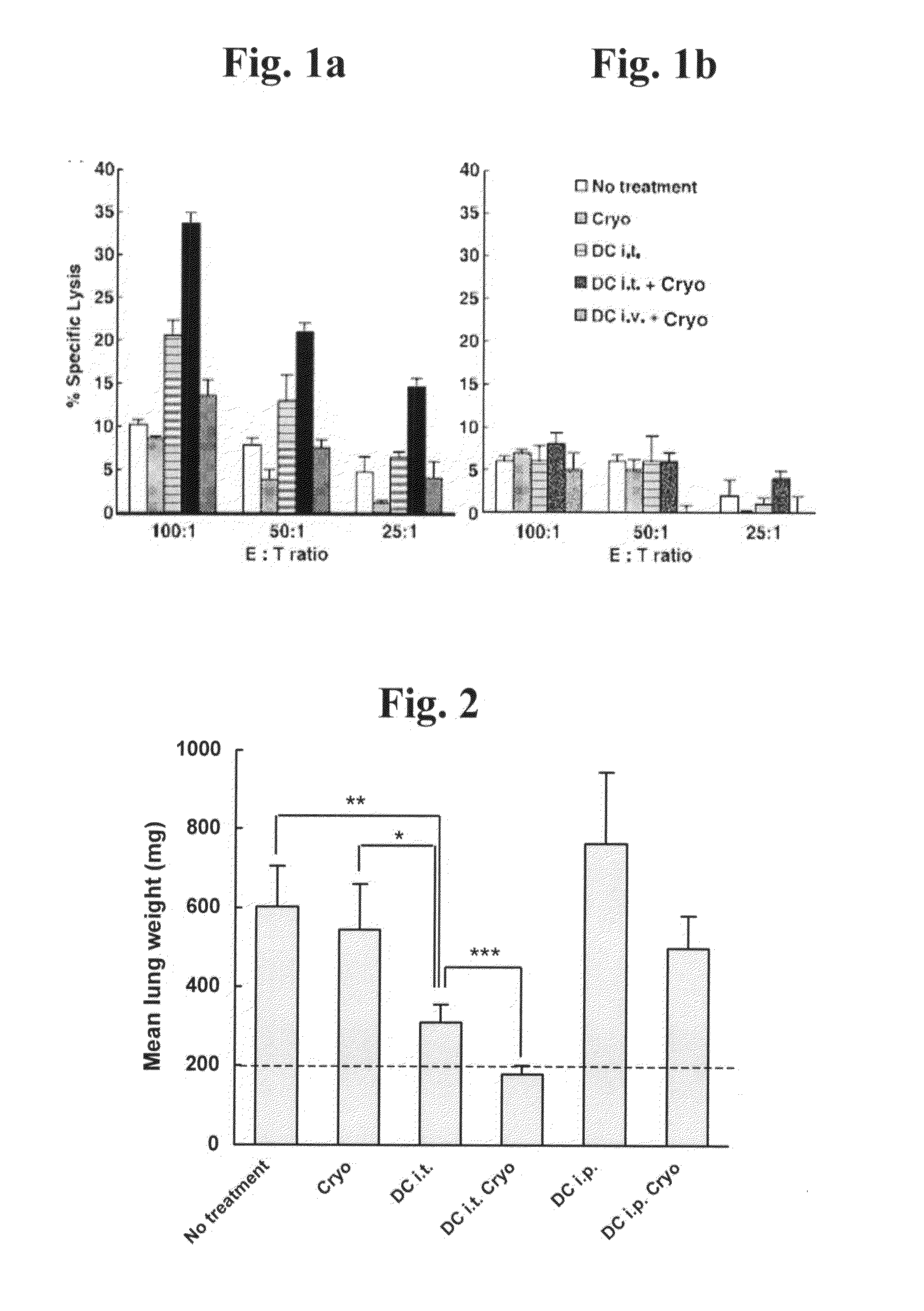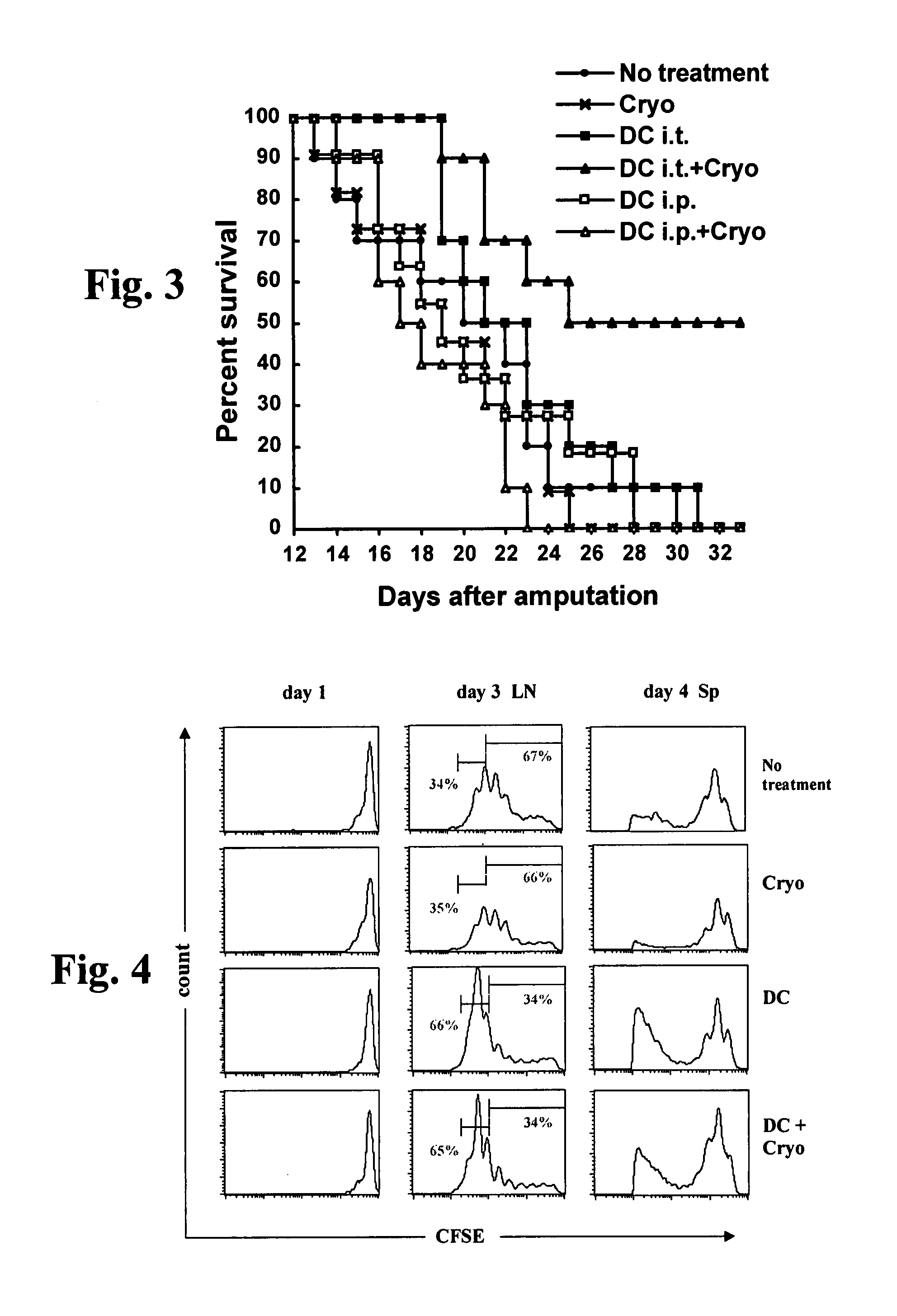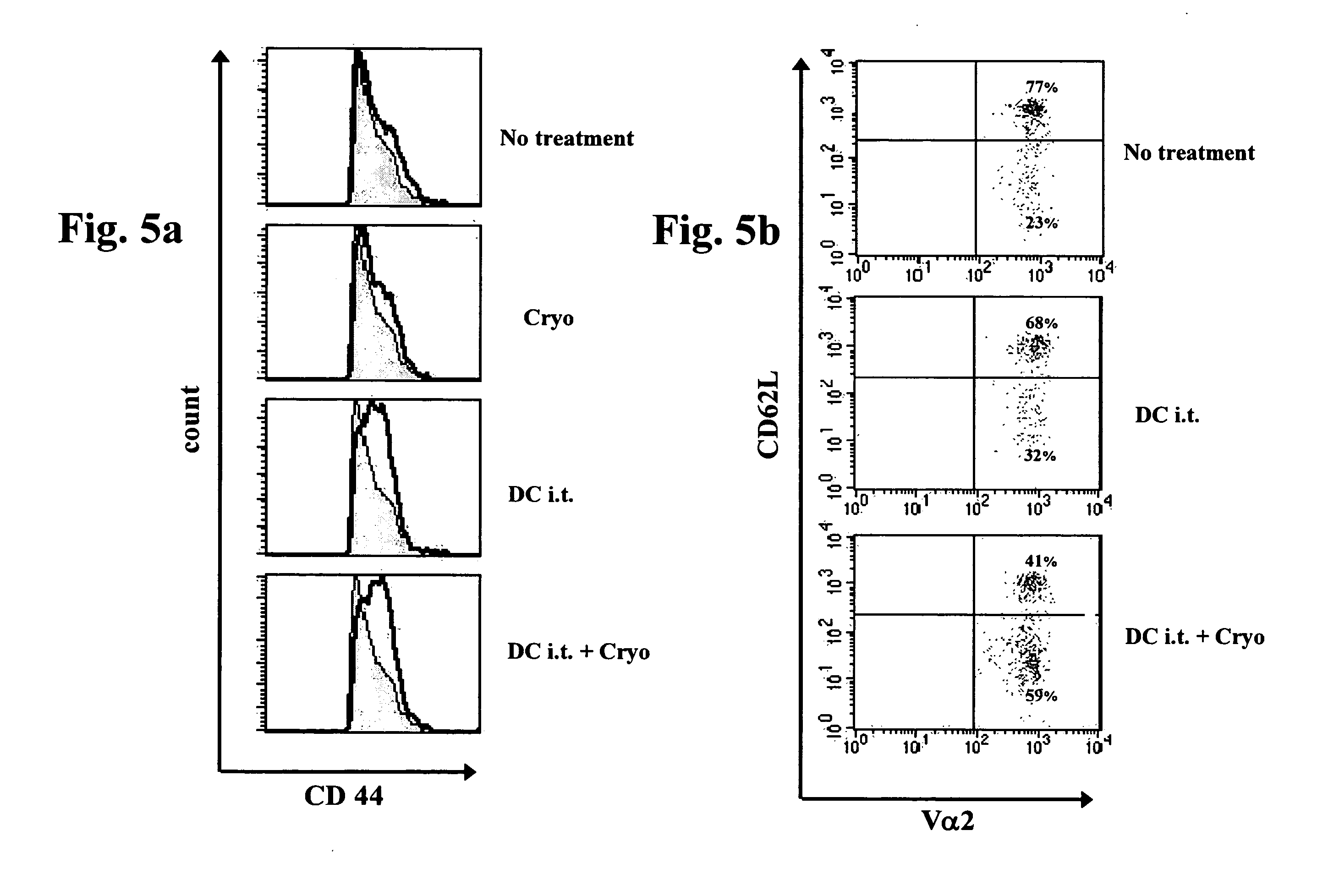Methods and Immunogenic Cell Preparations for Treating Antigen-Associated Diseases
a technology of immunogenic cells and antigens, applied in the field of methods and immunogenic cell preparations for treating antigen-associated diseases, can solve the problems of inability to complete surgical removal or destruction of primary lesion tissues capable of eventually generating metastases, inability to complete surgical removal or destruction, etc., and achieve the effect of effectively treating metastatic cancer, reducing, and inhibiting or eliminating growth
- Summary
- Abstract
- Description
- Claims
- Application Information
AI Technical Summary
Benefits of technology
Problems solved by technology
Method used
Image
Examples
example 1
General Materials and Methods
[0227]Experimental strategy overview: The immunostimulatory, antimetastatic, and pro-survival effects of treatment of tumor-bearing mice via cryoablation only, dendritic cell administration only, or combined cryoablation and dendritic cell administration were investigated using as a murine tumor model a lethal, spontaneously metastatic lung carcinoma line. The immune mechanisms elicited by the experimental treatments were investigated using as a murine tumor immunity model a transfectant melanoma cell line expressing an exogenous antigen, and adoptive transfer of CD8+ T-lymphocytes specific for the exogenous antigen.
[0228]Mice: Eight- to twelve-week old C57BL / 6 mice and OT-1 TCR (Valpha2 / Vbeta5) transgenic mice, encoding a TCR specific for the H-2Kb-restricted ovalbumin257-265 peptide SIINFEKL (SEQ ID NO: 1; Hogquist K A. et al., 1994. Cell 76:17-27) were bred in the Weizmann Institute. All mouse experiments were approved and conducted under Institutiona...
example 2
Synergistic and Highly Effective Treatment of Lethal, Metastatic Cancer Via Combined Tumor Cryoablation and Intratumoral Dendritic Cell Administration
[0240]Background: No optimal therapy exists for treatment of numerous types of cancers, in particular for treatment of metastatic cancers. While localized cell ablation, in particular cryoablation, of prostate, uterine, renal and hepatic primary tumors and metastases is considered a minimally invasive treatment demonstrating a low complication rate in comparison to conventional surgery for treatment of localized accessible lesions, this type of therapy has no systemic effect, and hence cannot be used to treat inaccessible, disseminated, or poorly localized lesions, nor to prevent local disease recurrence. Immunotherapeutic approaches, on the other hand, such as those involving antigen-presenting cell (APC) vaccination, while being less suited for treatment of bulky lesions, such as primary tumors, than localized cell ablation methods, ...
example 3
Treatment of Tumor-Bearing Mammals with Combined Tumor Cryoablation and Intratumoral Dendritic Cell Administration Specifically Induces Maximal Generation of Th1 Cytokine-Producing CD4+ T-Cells Relative to Either Treatment Alone or Combined Tumor Cryoablation and Intravenous Dendritic Cell Administration
[0254]As described in Example 2 above, treatment of tumor-bearing mammals via combined tumor cryoablation and intratumoral dendritic cell administration results in optimal activation of specific anti-tumor responses, anti-metastatic effect and survival prolongation relative to either treatment alone. While reducing the present invention to practice, as described below, the present inventors have unexpectedly uncovered that combined tumor cryoablation and intratumoral dendritic cell administration induces maximal generation of Th1 cytokine producing helper T-lymphocytes relative to either treatment alone, thereby suggesting that Th1 cytokine administration can be used to increase the ...
PUM
| Property | Measurement | Unit |
|---|---|---|
| volume | aaaaa | aaaaa |
| weight | aaaaa | aaaaa |
| diameter | aaaaa | aaaaa |
Abstract
Description
Claims
Application Information
 Login to View More
Login to View More - R&D
- Intellectual Property
- Life Sciences
- Materials
- Tech Scout
- Unparalleled Data Quality
- Higher Quality Content
- 60% Fewer Hallucinations
Browse by: Latest US Patents, China's latest patents, Technical Efficacy Thesaurus, Application Domain, Technology Topic, Popular Technical Reports.
© 2025 PatSnap. All rights reserved.Legal|Privacy policy|Modern Slavery Act Transparency Statement|Sitemap|About US| Contact US: help@patsnap.com



